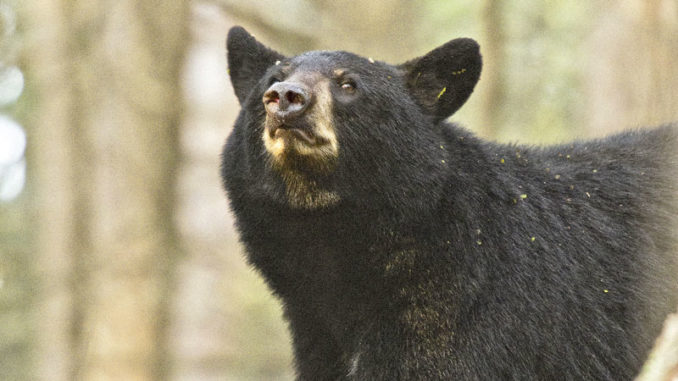
Want a bear rug but don’t have access to private land or the money for a bear hunting guide? Here’s how to set up on eastern North Carolina’s many game lands for a black bear.
No state offers its big-game hunters the opportunity to tangle with the biggest black bears in North America like North Carolina, especially on public lands, and especially in the eastern third of the state.
Public-land hunters who do their homework stand an awfully good chance of seeing and getting a shot at a bruin on eastern North Carolina game lands. Just get that hunting license, big-game license and bear stamp, visit the N.C. Wildlife Resources Commission’s on-line bear page. and its on-line Game Lands pages, which are full of maps that can lead you to a good starting point.
Scouting is a big part of bear hunting
Boots on the ground. Scouting is the most-important factor in a public-land bear hunt. If I hunt one day, I have probably have scouted four to six times earlier.
I will be looking for food sources whether it’s agriculture — corn and soybeans — or natural browse, including nut trees and berry bushes. Bears will defecate on or near their food. It lets other bears know the pecking order and establishes dominance. And it allows the bear to pinpoint his food sources so he can relocate them for future feeding.
Seeing one bear pile isn’t significant. There will be many piles in an area, and this will tell you that you’re in an area that bears are frequenting. Bears like to cross bodies of water — streams or canals — at a bridge or downed tree to stay dry. If you find either in a bear area, realize this spot will be the place they will want to walk to get across.
I use trail cameras, and this lets me know the bears in a specific area and builds confidence in my hunt areas. Use whatever camera you can afford, and use a bear box. Cameras should be checked during the middle of the day to keep disturbance to a minimum.
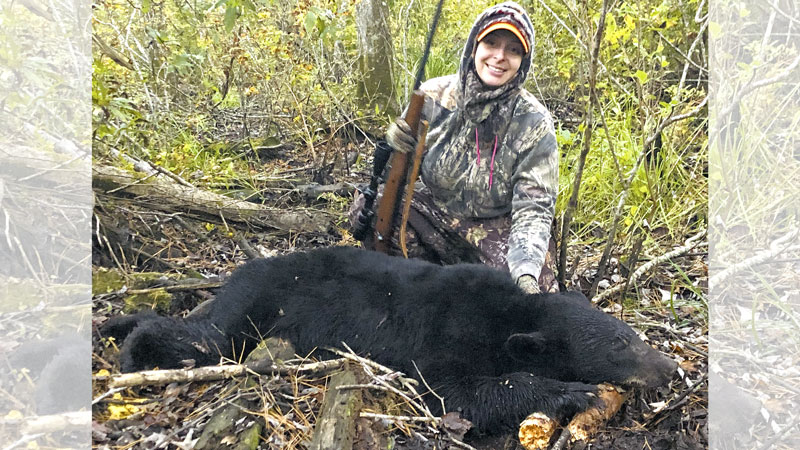
Access to land
Often, gates are placed across roads to prevent vehicle travel on public land. I do a lot of walking to learn new places. Walking a mile or two away from access points will alleviate 90% of potential competition. This can be good, because it will deter the less-motivated hunter. I have used canoes and bicycles to get away from parking areas.
The majority of time, I scout in Hyde, Tyrell and Washington counties in northeast North Carolina. All of these counties have high bear densities. Many public lands will adjoin bear sanctuaries. Also, look for the possibility of draw hunts.
Maps and apps
I am a big fan of the app HuntStand; however, I have also used onX Hunt. Utilizing these apps, a hunter can mark trails and stand sites. This is vital, because keeping your presence to a minimum and hiding your access points are imperative for a successful hunt. Additionally, you can read topo maps and look for bodies of water, dikes that can get you into isolated ground and view transition lines, walkable land to swamp areas and high points such as isolated islands and ridges. HuntStand has a GIS option that allows you to see property lines and landowners.
Also you can get in contact with people to see about an alternative access point than the traditional walking paths made by the N.C. Wildlife Resources Commission.
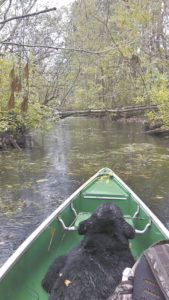
Stand Placement is critical when bear hunting
Hunt the wind. I like to hunt a crosswind or be on the downwind side of where I think the bear may come from, because a bear’s nose is its best defense. Wash your hunting clothes in scent-free detergents. And don’t use the boots you plan on hunting in for anything else. Spray down with scent killer once you get out of your truck. I like to keep my hunting gear in a scent-free bag and get dressed in the field.
Watch your step. Don’t walk on the trails where you expect the bear to come from. If I suspect a bear is using a specific trail, I will do my best not walk on the trail or have the animal between myself and the stand site. A bear’s nose is the one thing you don’t fool.
Stay high. Being as high as you can is imperative so your scent will stay above the bear. I have used climbing stands and ladder stands. Climbers’ advantage is they can be placed by one person and are mobile. You can get 25 feet off the ground if necessary. A ladder stand must be installed by two hunters but has the potential for you to buddy hunt — and a more secure feel.
Equipment
Climbing stands vs ladder stands. Any stand will work. I personally would rather have two less-expensive stands as opposed to a single expensive one, so I can have options. Ladder stands usually have better rests but only allow you to go so high. They are more bulky, heavier and harder to carry deep into the woods.
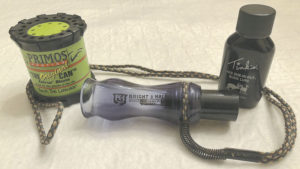
Shotgun or rifles. Whatever you use, be sure it is a shotgun with slugs or large-caliber rifle and quality ammo. A bear is a tough animal, so marginal or questionable shots will not bring your trophy down. I personally prefer a shotgun with a sabot slug for a heart or lung shot. Larger-caliber rifles with heavy ammo will also do the trick.
Most hunters aren’t capable of making head shots; I recommend a broadside shot. Further back is better than in the shoulder; most of the time, a shoulder shot will end in a lost bear. Whether you use a rifle or shotgun, practice with your weapon and be proficient. If you have the chance to shoot a bear that is still showing signs of life after the first shot, take that additional shot. Tracking in a thick Carolina Bay isn’t exactly easy.
Techniques
Calling. I have had success calling bears with both a doe can call and a single-reed rabbit-in-distress call. I turn the can call over four to five times every 20 to 30 minutes, changing the pitch and tone to sound like a doe in trouble or lost. Fawns and wounded deer are a favorite food among bears, especially older bears that have a history hearing such noises and assimilating it to a dinner bell. When using the rabbit call, change your tone and diction to add realism. I like to use calls in addition to doe urine to add additional authenticity to the set. You can lay down a drag rag, downwind on a trail for a bear to pick up the scent of the deer they think is in the area.
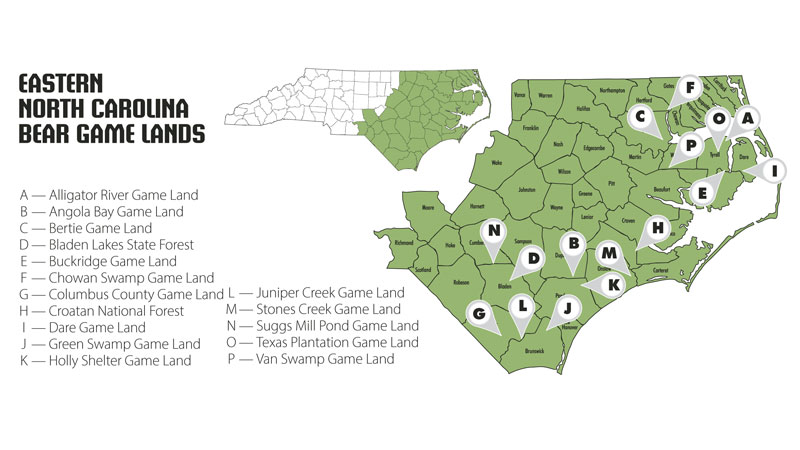 Be where bears traditionally want to travel. You can hunt hard and long, but if you aren’t where the bears traditionally walk or feed, you are wasting your time. Hunt fresh sign and only the most recent information.
Be where bears traditionally want to travel. You can hunt hard and long, but if you aren’t where the bears traditionally walk or feed, you are wasting your time. Hunt fresh sign and only the most recent information.
Baiting. If you see a deer during your hunt, you may shoot it and hunt over it. The bear’s keen nose will smell the blood, and if the bear is within close proximity, it will come investigate.
 Benefits
Benefits
The potential to gain more knowledge and woodsmanship. Hunting public land will make you a better hunter. Learn from your hunts and apply your knowledge to future hunts.
Rewards are greater when you’re successful on public lands. That’s a trophy in itself.
It’s more affordable than a fully guided hunt on private land or a lease. A guided hunt over bait or with hounds can cost, on average, $2,000 to $3,000. If you have more time than money or rather feel the pride and satisfaction from a D-I-Y hunt, this may be for you.
Drawbacks
Planning and time is involved. To be successful on public land, it takes a lot of preparation, scouting, setting up and leg work. If you’re not motivated and fully involved, success may bypass you.
There is the potential that someone could come and ruin your public-land hunt, because what’s there for you is also there for your competition. Leave little or no footprint, and be stealthy with your findings.
Some game lands have smaller windows to pursue a bear. Some are only open for three-day hunts, which means you have to be efficient with your hunts.
When you get your bear down, you have options based on manpower and the size of the bear. I have carried bear out on my back and put them on an army cot when there were no additional hunters to assist. If you are hunting by yourself and you get a sizeable bear down, a pack-out may be the best option. A military style duffle bag is a handy thing to carry out the meat and hide.

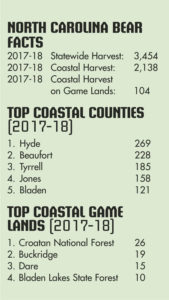
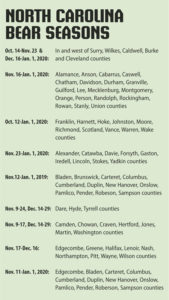
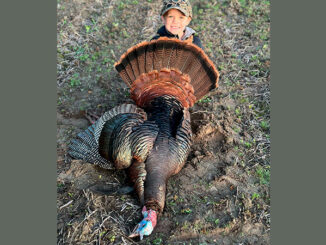

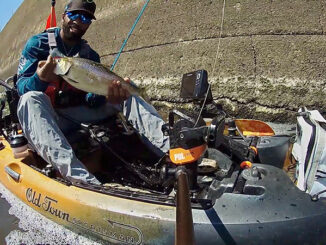
Be the first to comment